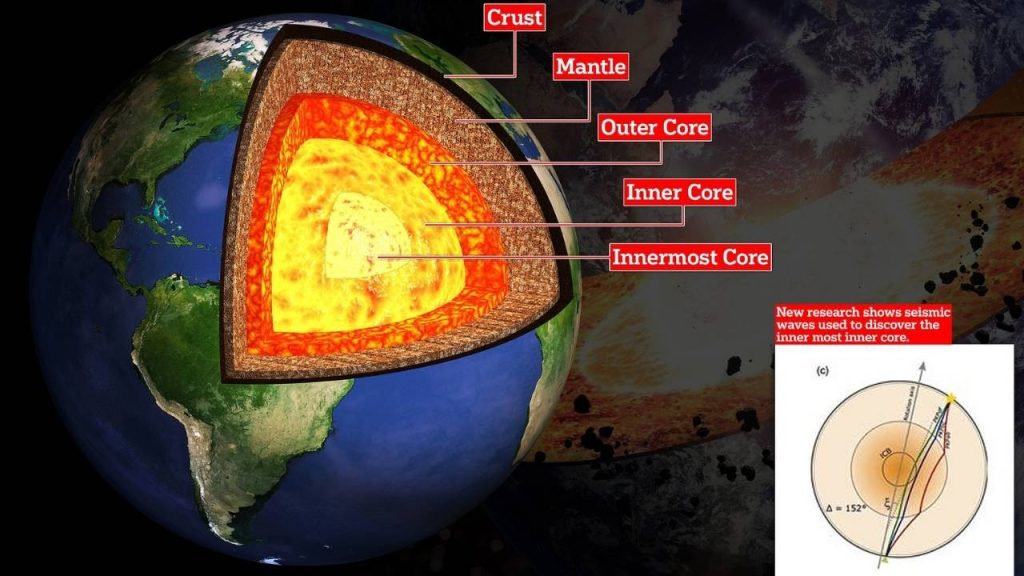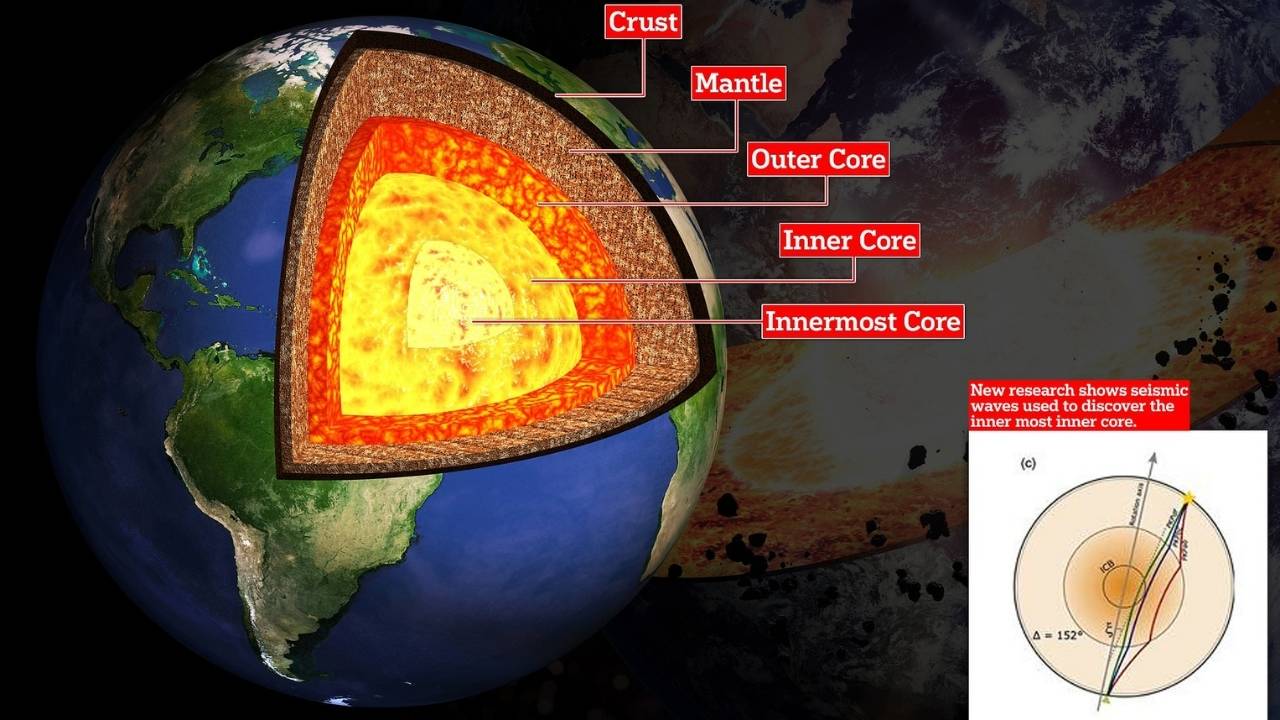Geoscientists have provided definitive evidence for a new, distinct layer at the centre of our planet: a solid metallic ball known as the innermost inner core. This discovery, made by analysing seismic waves from powerful earthquakes, offers unprecedented new insights into the formation and evolutionary history of Earth.

Earth Has a 5th Layer
| Key Fact | Detail |
| New Layer Confirmed | A solid metallic ball, approximately 650 kilometres in radius, sits inside the inner core. Nature Communications |
| Method of Discovery | Analysing how seismic waves reverberate through the planet’s diameter up to five times. |
| Primary Distinction | The crystal structure of the innermost inner core is different, slowing seismic waves at a different angle compared to the outer layer of the inner core. |
| Historical Implication | Suggests a major, yet unknown, global event in Earth’s early history altered the core’s growth. |
A New Frontier Within Our Planet
For decades, school textbooks have taught that the Earth’s structure consists of four layers: the crust, the mantle, the liquid outer core, and the solid inner core. However, research published in the journal Nature Communications by seismologists from The Australian National University (ANU) has confirmed a long-held hypothesis that there is a fifth layer—a solid ‘core within a core’.
“The existence of an internal metallic ball within the inner core, the innermost inner core, was hypothesised about 20 years ago,” said Dr. Thanh-Son Phạm, a lead author of the study and a researcher at the ANU Research School of Earth Sciences. “We now provide another line of evidence to prove the hypothesis.” This central sphere is believed to be a “fossilised record” of a significant event deep in our planet’s past.
How Scientists Uncovered the Innermost Inner Core
The discovery was not made by drilling, but by using the entire planet as a giant detector. Scientists harnessed the energy from powerful earthquakes to probe the planet’s deepest reaches.

The Role of Seismic Waves
When a large earthquake occurs, it sends out vibrations, or seismic waves, that travel through the planet. By measuring these waves at seismograph stations around the globe, scientists can piece together a picture of the Earth’s interior, similar to how a medical ultrasound creates an image of the inside of a body.
This breakthrough study analysed data from seismic waves that travelled back and forth across the Earth’s full diameter up to five times. Probing the core with these reverberating waves, which passed near the Earth’s centre, allowed the team to detect subtle changes in the structure of the iron-nickel inner core.
Detecting a Different ‘Anisotropy’
The key to identifying the innermost inner core was a property known as anisotropy. This refers to how the speed of seismic waves changes depending on the direction they travel through a material, which is influenced by the alignment of the material’s crystal structure. Think of it like the grain in a piece of wood—it’s easier to split the wood along the grain than against it.
The researchers found that in the innermost inner core, seismic waves travelling at a 50-degree angle to the Earth’s rotational axis were slowed. In the outer layer of the inner core, the slowest direction is parallel to the axis. This distinct anisotropic property suggests the iron crystals in the central part of the core are structured differently from those in the outer part.
“This inner core is like a time capsule of our planet’s evolutionary history,” explained Professor Hrvoje Tkalčić, a co-author of the study. “It’s a fossilised record that serves as a gateway into the events of our planet’s past. Events that happened on Earth hundreds of millions to billions of years ago.”
What This Means for Understanding Earth’s History
The finding has significant implications for our understanding of how Earth formed and evolved. The different crystal alignment within the innermost inner core strongly suggests that at some point in its history, the growth of the inner core changed. This points to a major global event that dramatically altered the conditions within the planet’s centre.
Scientists speculate this event could have influenced Earth’s magnetic field, which is generated by the movement of the liquid outer core and is crucial for protecting life on the surface from harmful solar radiation. Understanding the Earth’s structure in such detail helps geophysicists refine their models of planetary formation not just for Earth, but for other rocky planets as well.
The research team hopes to continue studying the planet’s deep interior using data from the ever-growing global network of seismographs. “The findings are exciting because they provide a new way to probe the Earth’s centre and its centremost region,” Dr. Phạm stated in a press release from ANU. This allows for a more complete understanding of our planet’s deep past and formative processes.
FAQs
- How big is the innermost inner core?
- The newly confirmed layer is a solid ball with a radius of approximately 650 kilometres (about 400 miles), making it slightly smaller than the Moon’s solid inner core.
- What is the innermost inner core made of?
- Like the rest of the inner core, it is believed to be composed primarily of an iron-nickel alloy, with trace amounts of other elements. The key difference is its crystalline structure, not its composition.
- Can we ever drill to the core?
- No, this is not possible with current technology. The extreme temperature (estimated to be over 5,700°C) and immense pressure (over 3.6 million times that at the surface) make direct observation impossible. All knowledge is gathered indirectly, primarily through seismic waves.

